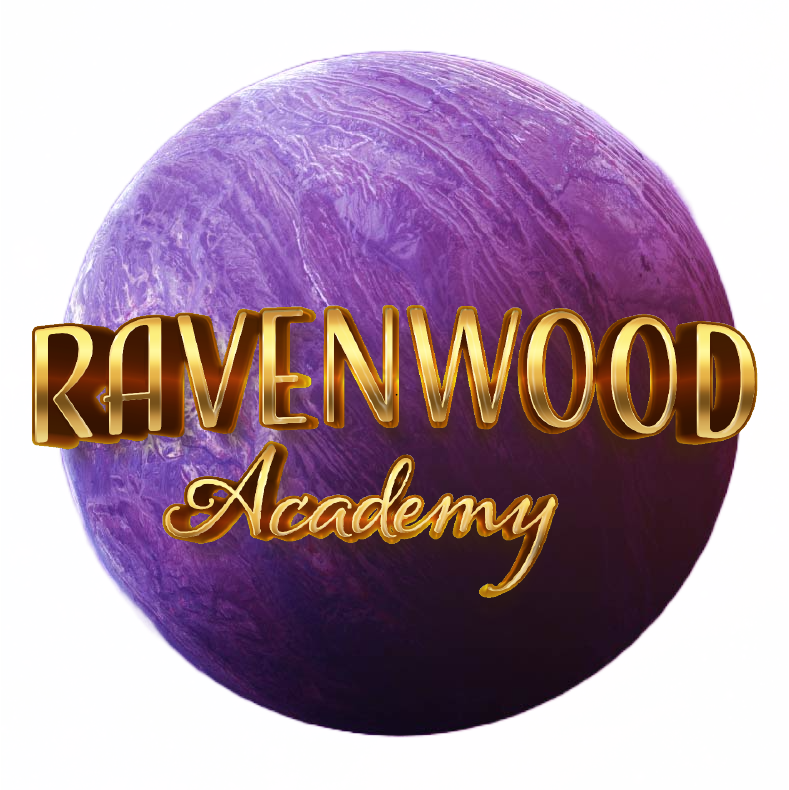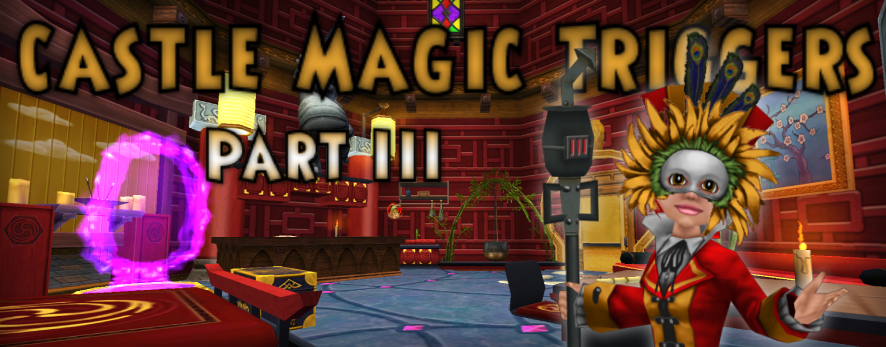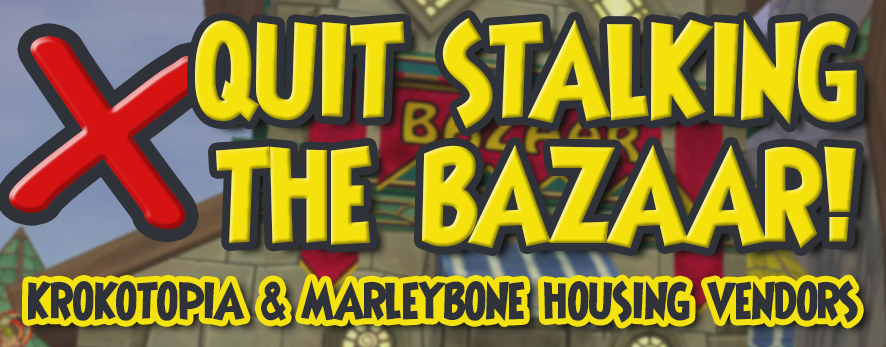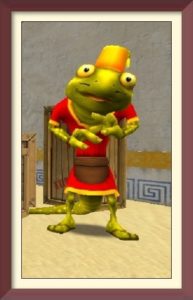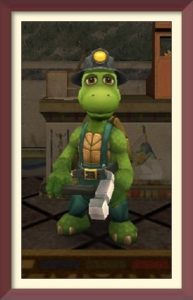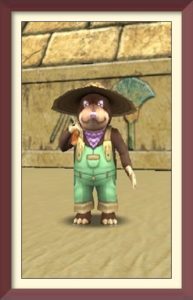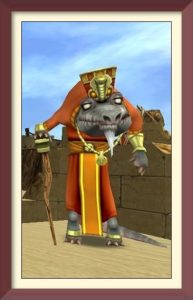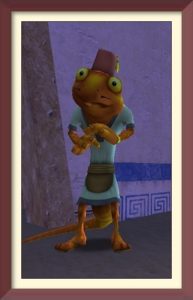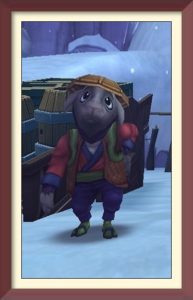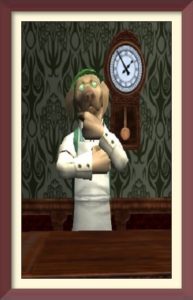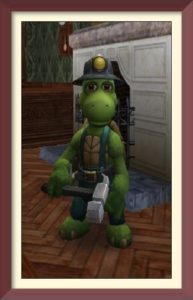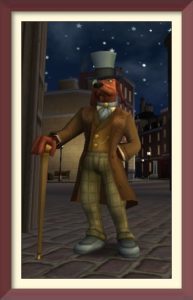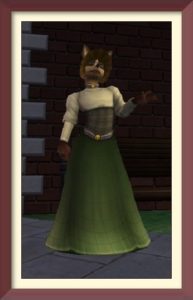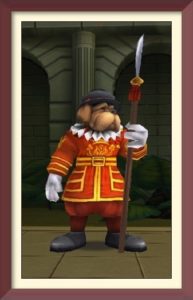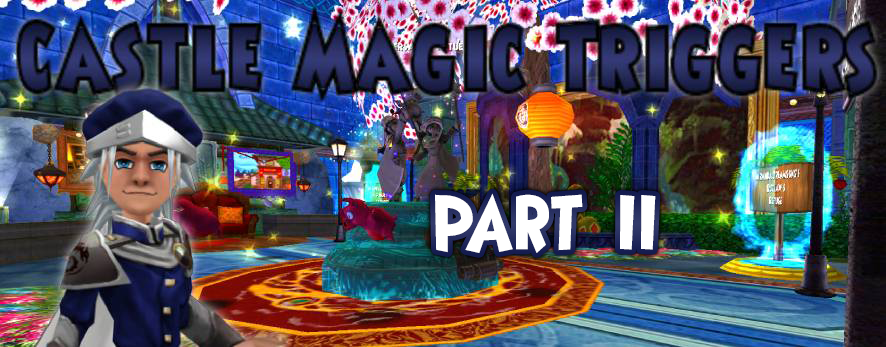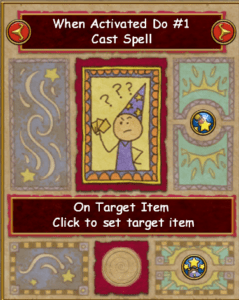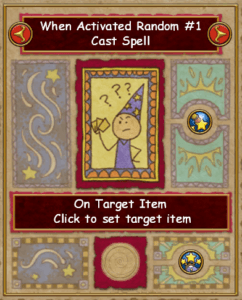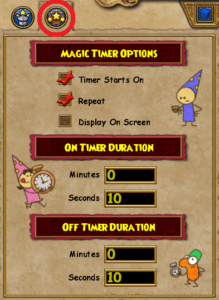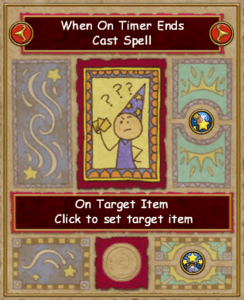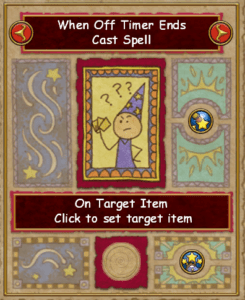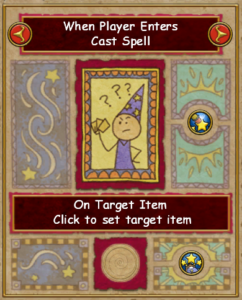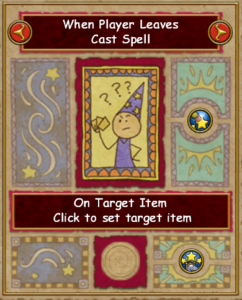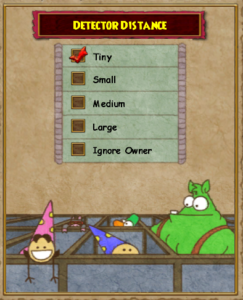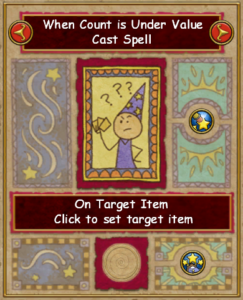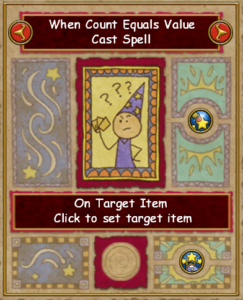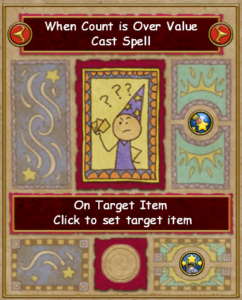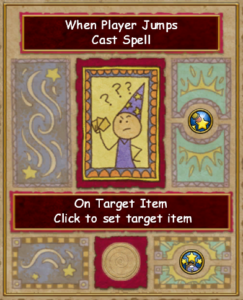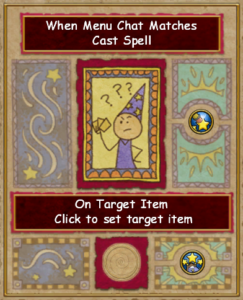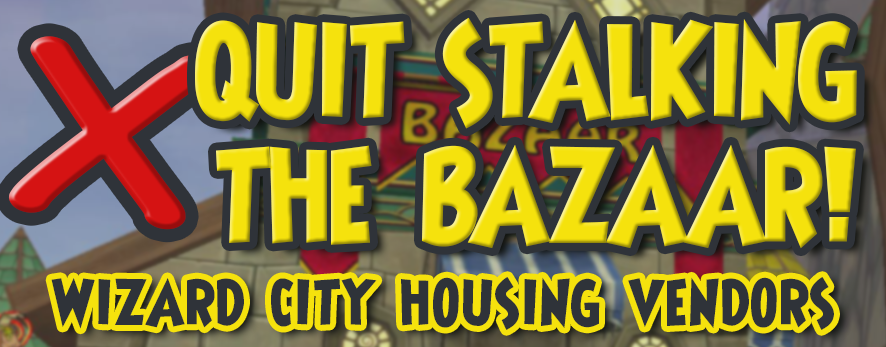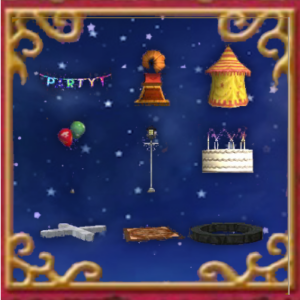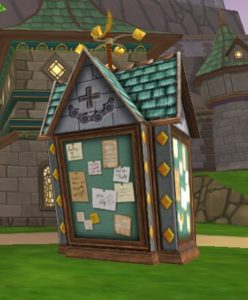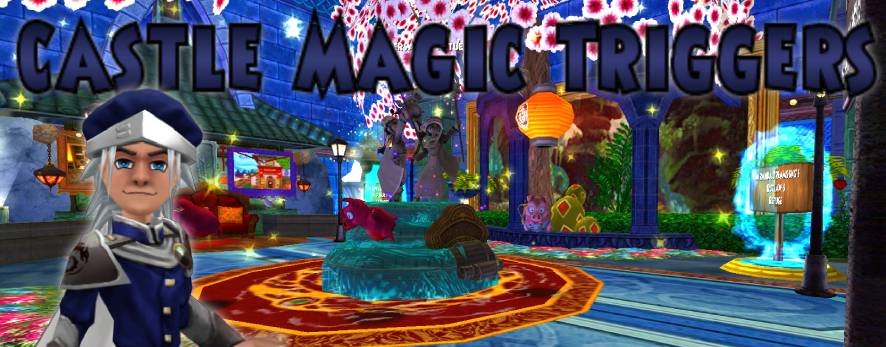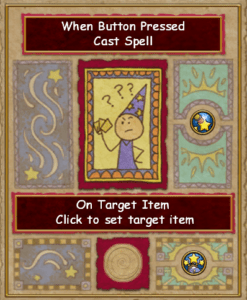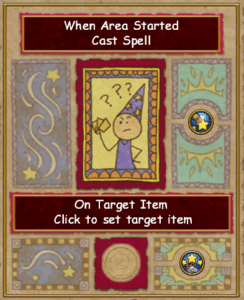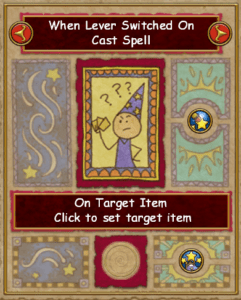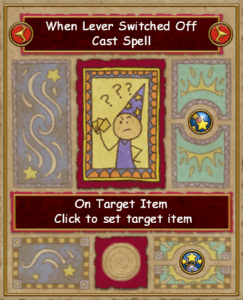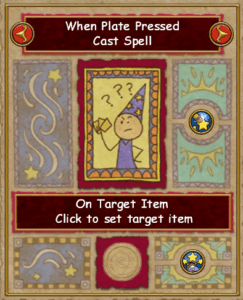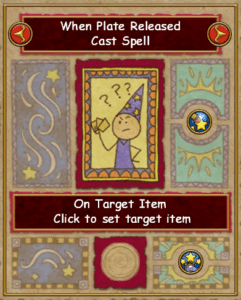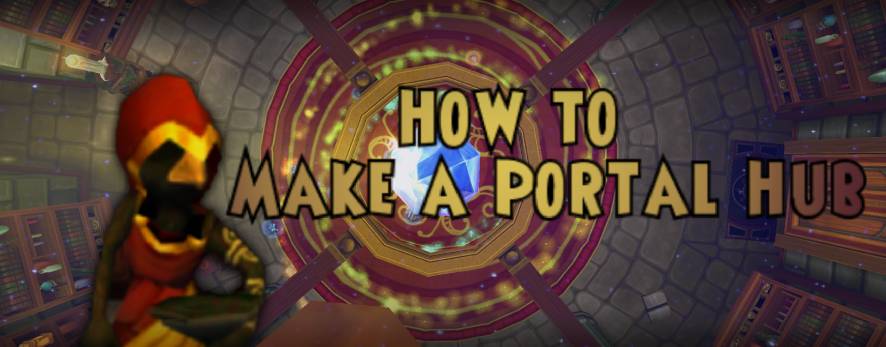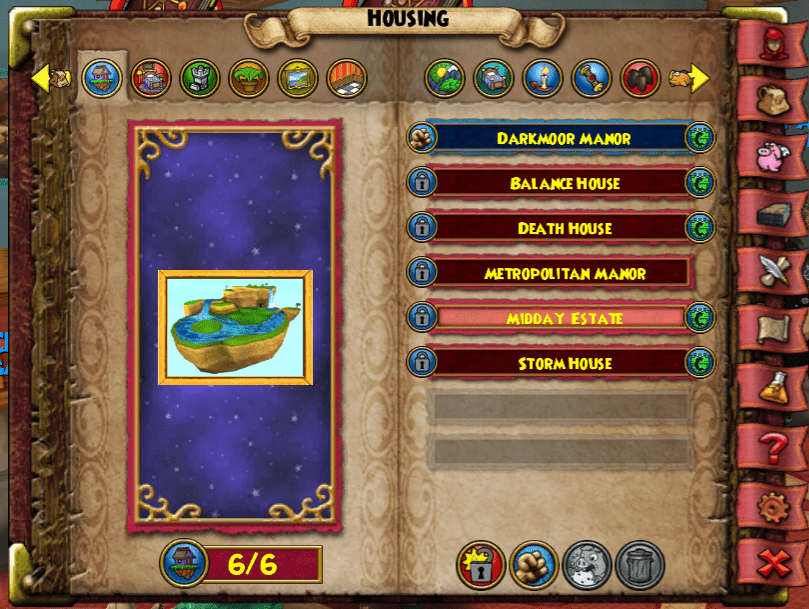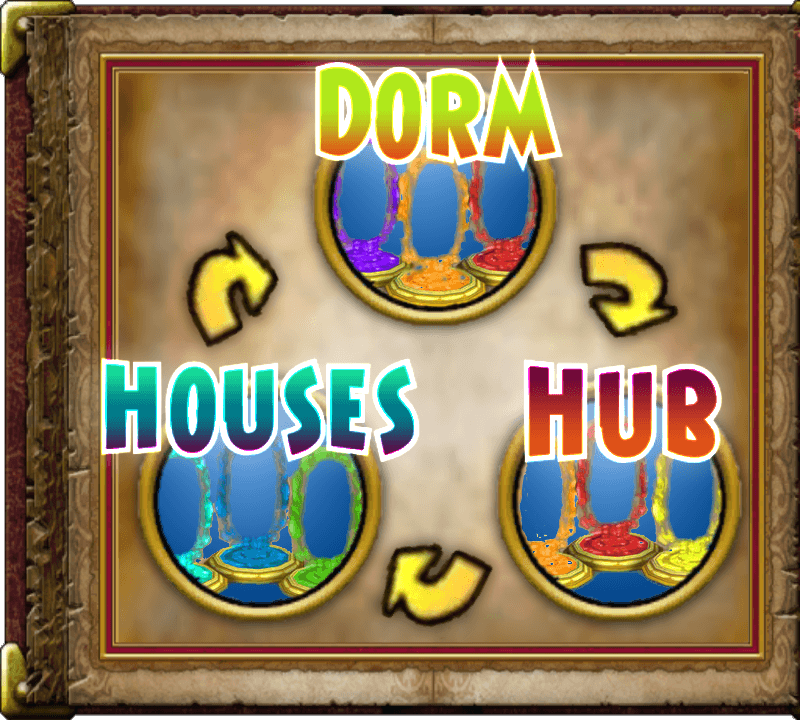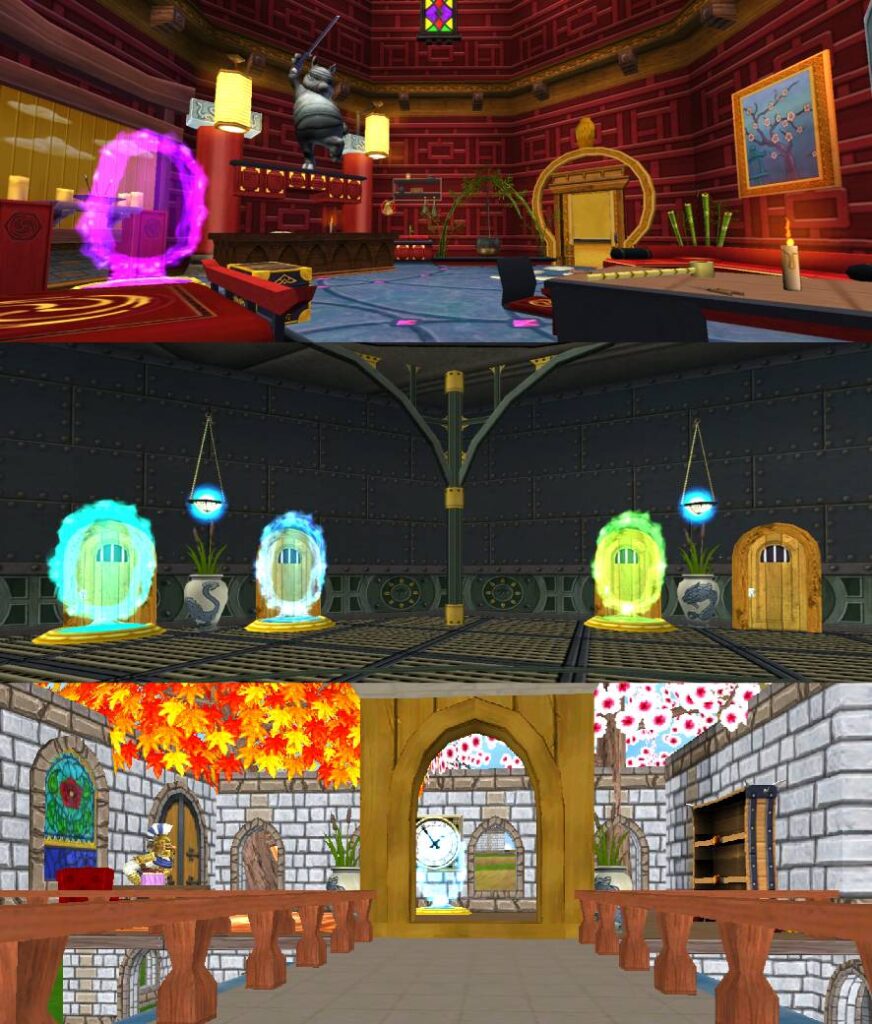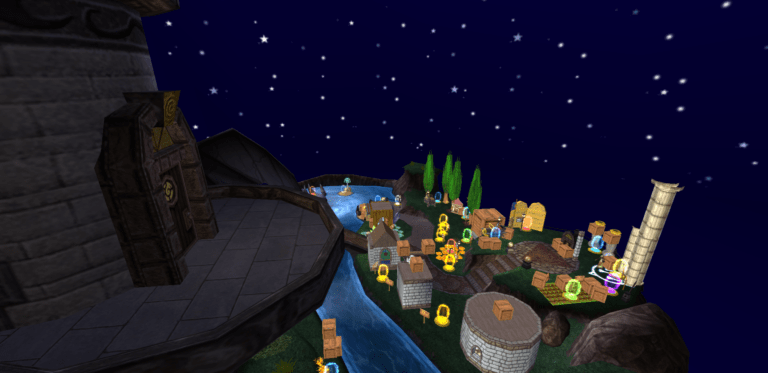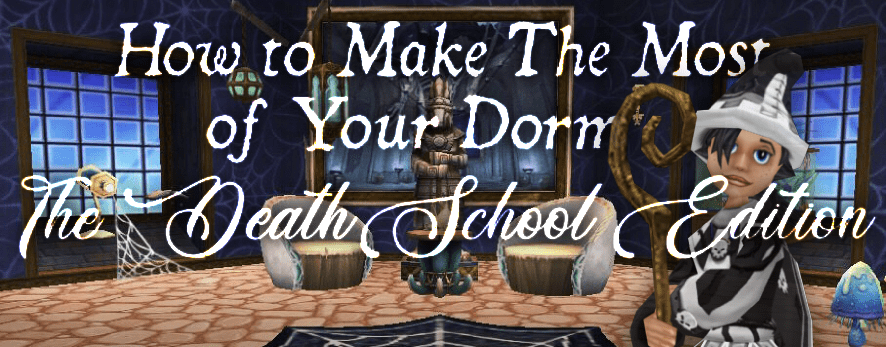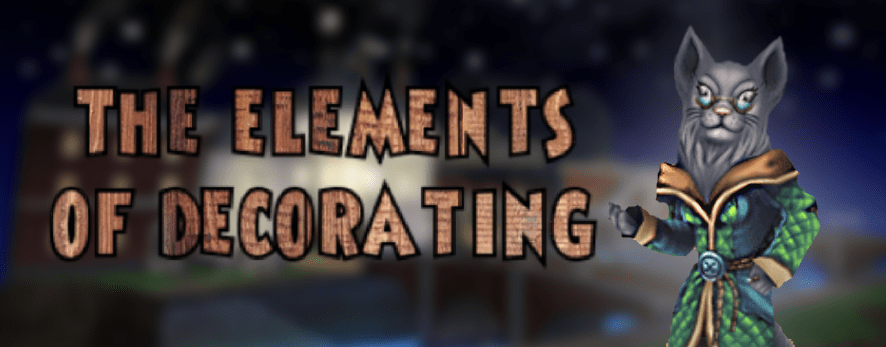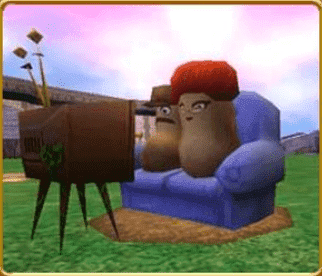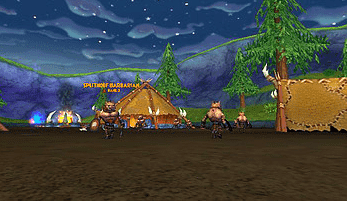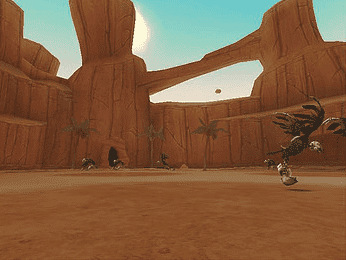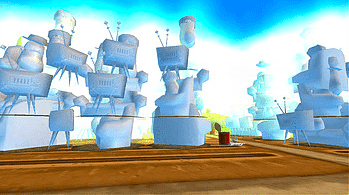Introduction
This will be the final part of the Castle Magic triggers guides. In this guide we will cover the remaining Castle Magic triggers. These triggers are the most difficult to understand. If you don’t know what Castle Magic triggers are, read through the first two guides first. Each section will name the trigger, what it does, how to use it, and why I assigned it to this difficulty. Then, I will finish by giving an example of how I like to use the trigger.
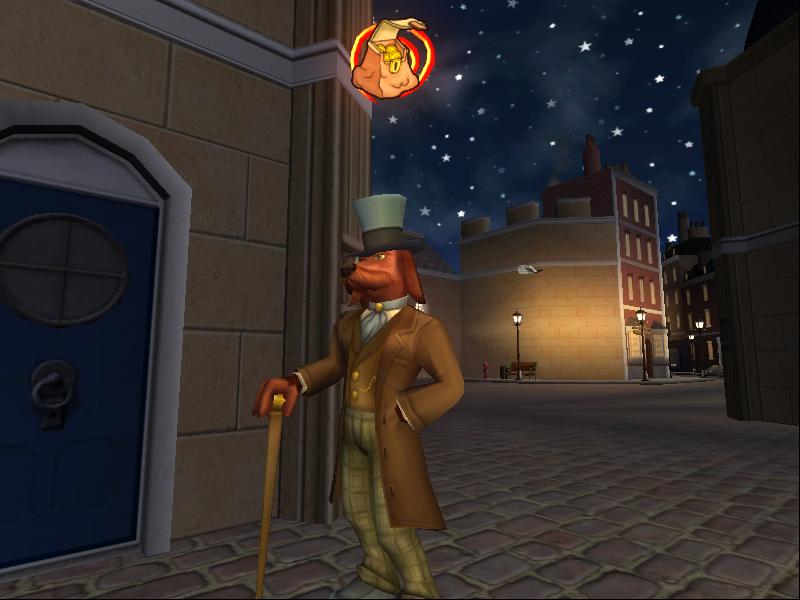
Advanced Triggers
These are the complicated Castle Magic triggers. Unlike immediate triggers, their purpose will generally be specific. They do not have a purpose for every creation. The few items in this category have many interactions within one trigger. Their interactions are are not the easiest to understand.
Magic Brazier
The Magic Brazier is like the magic lever from the beginner guide. The brazier has many states and casts a spell when it enters each one. But, unlike the lever, the magic brazier has 4 states: off, fire, storm and ice. To change the brazier’s state a player must use the item by interacting with it. This is an advanced trigger, as it requires managing many states that each cast their own spells. The best uses I have seen for this trigger involve creating puzzles. When used with another trigger, you can create a brazier combination to open a door.
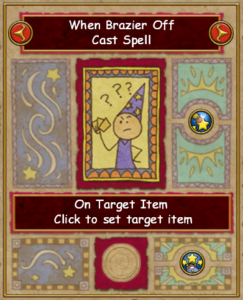
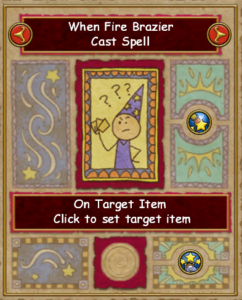
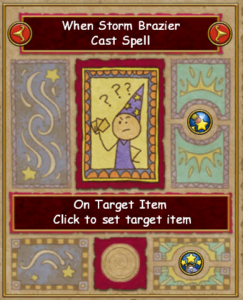
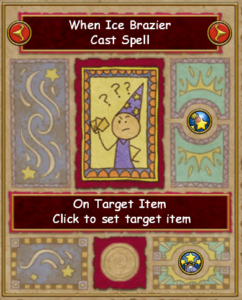
Magic Item Detector
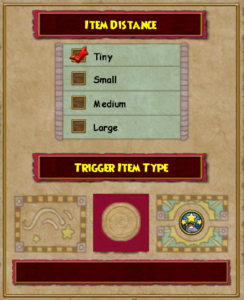
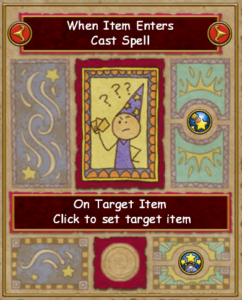
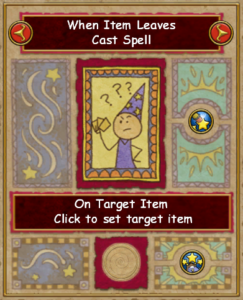
Magic Orb Catchers
Magic Orb Catchers need to be in the same house as a magic orb to function. They both come in three varieties: Fire, Ice and Storm. To use them, you need to both place the orb catcher and the corresponding magic orb somewhere in the same house. When a player walks over the orb, they will pick it up. As soon as that player walks near the same school’s orb catcher, the orb will disappear and the spell will trigger. One use for these triggers is requiring a player to have a key before accessing another area. If a magic orb catcher opens a door, the player would need the corresponding orb to open said door.
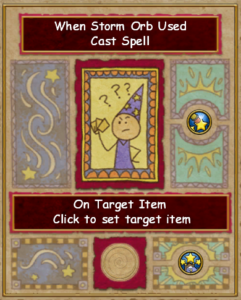
Magic Computer
- When Signal 1 AND 2 – This is the simplest of the magic computer expressions. When the Magic Computer has both signals, it will cast the AND spell. If it only has Signal 1 or Signal 2, it will not cast the spell, it must have both signals.
- When Signal 1 OR 2 – This expression requires only one of the signals to activate. It can be either Signal 1, Signal 2 or both. As long as the computer has at least one signal, the OR spell will activate.
- When Signal 1 XOR 2 – Like the OR expression, except it only allows one signal or the other. If the computer has both signals, the XOR spell will not cast.
- When NOT Signal 1 – This spell will cast as long as the Magic Computer does not have Signal 1. It can have no signals or Signal 2, but as soon as the Magic Computer gets Signal 1, it will not cast.
- When NOT Signal 2 – This function will always be active as long as the Magic Computer does not have Signal 2. It can have no signals or Signal 1, but as soon as the Magic Computer gets Signal 2, it will not cast.
- When NOT Signal 1 AND 2 – This spell will always cast as long as the Magic Computer does not have both signals. It is a complete opposite of “When Signal 1 AND 2”, if that spell is casting, this one is not.
As a concluding note on Magic Computers, they will only cast their spells when they update with a new signal. For instance, “When NOT Signal 1 AND 2” is active without touching the computer. But, it will not cast the spell until you alter either of the signals.
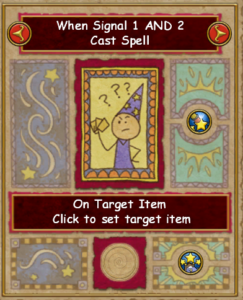
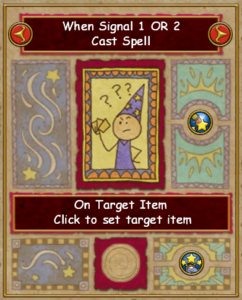
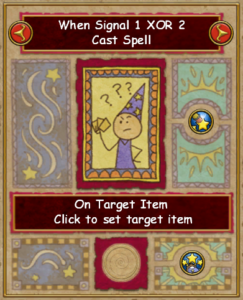
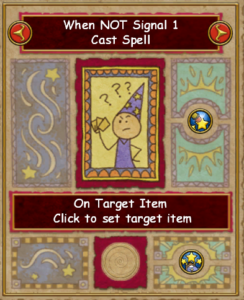
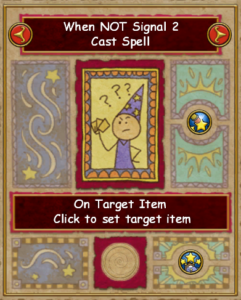
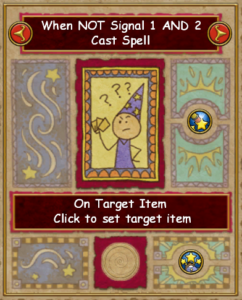
Conclusion
This concludes my guides on the Castle Magic triggers themselves. As always, feel free to ask if you have any questions on how to operate or use these triggers or about Castle Magic. I’d love to hear how you use your Castle Magic triggers! Otherwise stay tuned for more Castle Magic content and let me know what type of guides you would like to see in the comments below.
